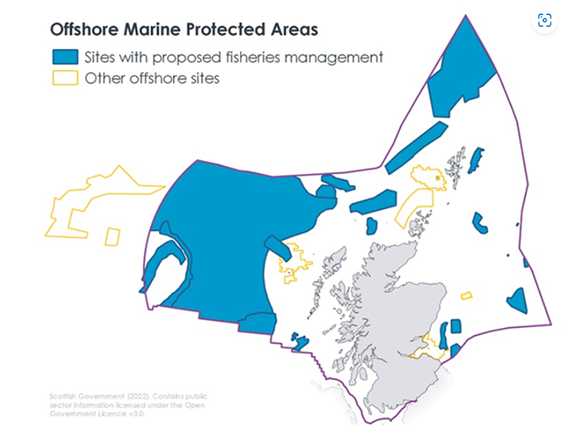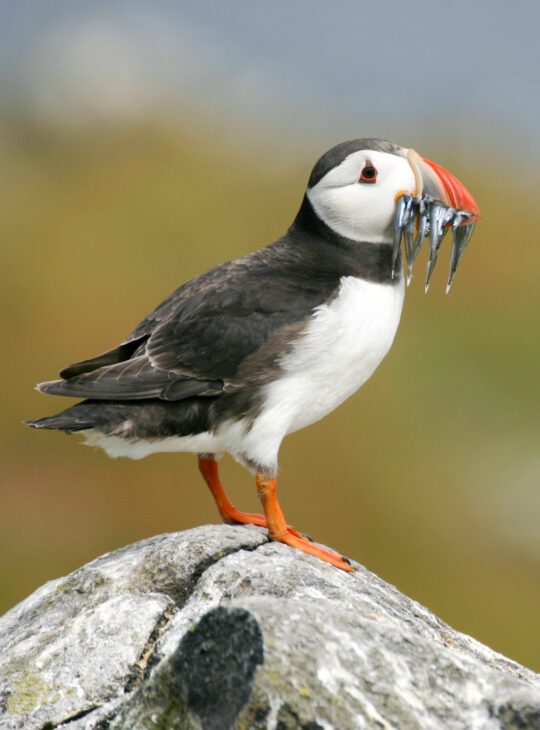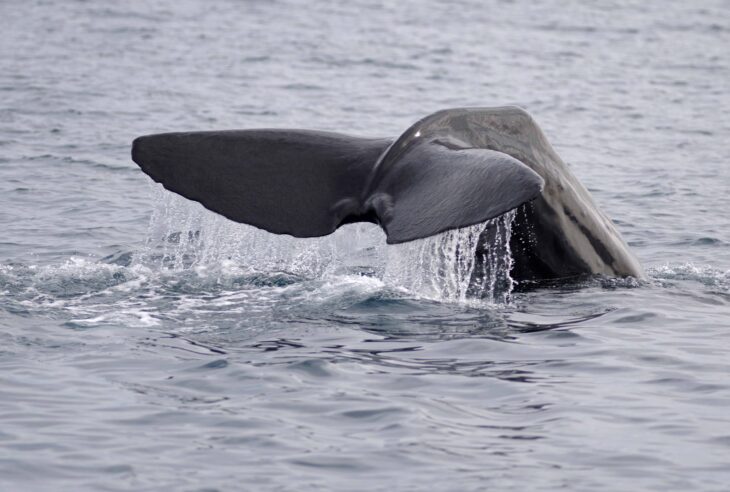Fisheries management for deep sea marine protected areas – how to make your voice heard!
This month the Scottish Government has launched a consultation looking at options for managing fisheries within 20 of Scotland’s offshore Marine Protected Areas (MPAs).
What are marine protected areas?
Marine Protected Areas (MPAs) are the cornerstones of international efforts to conserve marine biodiversity as they contain a wealth of valuable habitats that form the foundations of a diverse and unique range of marine life. In Scotland it is The Marine (Scotland) Act 2010 and the Marine and Coastal Access Act (2009) that provides power to Scottish Ministers to designate MPAs. The majority of MPAs in Scotland are designated for Nature Conservation for vulnerable species and habitats with the current network covering 37% of Scotland’s seas. Offshore MPAs are sites that are between 12 and 200 nautical miles from the shore.

Why introducing fisheries management measures is so important
Designating an area as an MPA does not necessarily mean that it is protected from all activities. A report published in 2023 by Professor James Harrison at the University of Edinburgh looked at the effectiveness of the current MPA network in Scotland. The analysis found that there are “significant gaps in management measures” and that none of Scotland’s MPAs offer a high level of protection to “the site as a whole”.
In Scotland management measures for the whole MPA network (inshore and offshore) were due to be completed in 2016, however this deadline was missed, along with another in 2020. As of 2024 real protection for the MPA network is now 8 years late. With every delay our coasts and seas are falling further behind the goals the Scottish Government has set for healthy, clean, productive, sustainable seas.
It is important to note that this consultation is not related to the recent discussion of Highly Protected Marine Areas and is instead an overdue conversation on designing and implementing tailored fishing restrictions to our MPA network. This is something that the Scottish Government is required by law to do.
It is vitally important that management measures are brought in, particularly in relation to the most damaging forms of fishing such as bottom trawling, which is estimated to occur in 98% of the UKs offshore MPAs. There are many different methods of fishing, some of which could be sustainably carried out within MPAs. However dredging and bottom trawling are the most damaging due to their impact on the seabed, where many protected species and habitats are in the offshore region, thereby undermining their protected status.
The marine life we need to protect in our deep seas
Our deep seas and continental shelf are home to some fantastic habitats and fascinating species from sea pens to sharks! They also support some of our larger more well-known species such as migrating whales and vast colonies of seabirds, all of which contribute to a healthy marine ecosystem.
For example, in the Firth of Forth Banks MPA sand and gravel habitats provide a home for sand eels that seabirds rely on during the breeding season, and are also an important food source for grey seals.

One of the largest MPAs in Scotland is the North-east Faroe-Shetland Channel. Its geology plays a key role in ocean currents that bring nutrients to the area, supporting a diverse range of marine life including deep-sea sponges. The channel is also thought to be a pathway for marine mammal migrations, including the fin whale and the sperm whale.

The benefits of a healthy marine ecosystem on human society are evident, most notably for marine industries like fisheries as a haven for commercially important fish species. Our deep-sea habitats are also vitally important in terms of their ability to store carbon, tackling the twin climate and nature crises. Sites such as the West of Scotland MPA protect some of the most vulnerable and diverse habitats and species in the world! Deep sea muds, whilst not the most attractive habitats in the world, contribute to carbon storage in the deep sea. Amazingly 50% of the oxygen we breathe is estimated to have been produced by phytoplankton, proving just how vital our seas are!
How to respond to the consultation
The consultation will run for eight weeks and closes on the 14 October 2024. You can find out more and respond to it on the Scottish Governments Citizen Space. This is the first consultation to use an interactive map which will help you to quickly and easily find each of the individual MPAs included in the consultation. You can find out more about how to use the interactive tool by watching the Explainer Video on the Marine Directorates YouTube channel. The map will allow you to comment on individual sites and their proposed management measures. You can comment on as many or as few sites as you wish, however we would encourage engaging with all of the sites.
For 15 out of the 20 sites the measures are split into two options – either a zoned approach to restricting certain fishing types within the MPA or restrictions across the whole site. For 5 sites only one option is given which is full site exclusion of fishing with specified gear, as this has been identified as the best option for meeting the governments conservation objectives. On the Citizen Space you will be able to find draft documents that explain the proposed management measures in more detail, as well as assessments of the potential impacts and benefits of these measures for each MPA. You will also be able to find the Consultation Paper on the Citizen Space where you can find out how to respond using an information form if you are not able to use the interactive map.
Other actions you can take today!
In addition to responding to the consultation there are other actions you can take:
1.Scottish Environment LINK are encouraging people to send an email to Gillian Martin, Cabinet Secretary for Net Zero and Energy, asking her to protect Scotland’s deep seas. You can do this really quickly and easily by visiting the e-action page here.
2.Emailing your local MSP to asking them to urge the Scottish Government to put robust fisheries management measures in place for the MPA network by the end of 2025 is another important way of making your voice heard. You can find your local MSP here.
3.Tell a friend or family member about the consultation and encourage them to respond.
Any and all of these actions will help to drive forward protections for our MPAs that are so desperately needed to ensure a sustainable future for everyone who values our coasts and seas.
Help protect Scotland’s wildlife
Our work to save Scotland’s wildlife is made possible thanks to the generosity of our members and supporters.
Join today from just £3 a month to help protect the species you love.
Preface
This month the Scottish Government has launched a consultation looking at options for managing fisheries within 20 of Scotland’s offshore Marine Protected Areas (MPAs). What are marine protected areas? Marine …
